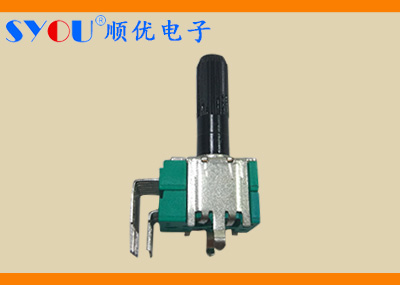
- A service manufacturer integrating design, manufacturing and sales


Service hotline+86 138-2577-8972



Service hotline+86 138-2577-8972

1. The resistor of the potentiometer is mostly made of synthetic resin of polycarbonate, and should avoid contact with the following items: ammonia, other amines, alkaline aqueous solution, aromatic hydrocarbons, ketones, aliphatic hydrocarbons, strong chemicals (high pH value), etc., otherwise its performance will be affected.
2. Avoid using water-soluble flux when welding the terminal of potentiometer, otherwise it will promote metal oxidation and material mildew; Avoid using inferior flux. Poor soldering may cause difficulty in tin application, resulting in poor contact or open circuit.
3. If the welding temperature of the potentiometer terminal is too high or the welding time is too long, the potentiometer may be damaged. The welding of pin type terminal shall be completed within 235 ℃± 5 ℃ and 3 seconds. The welding shall be more than 1.5mm away from the potentiometer body. During welding, solder shall not flow through the circuit board; The welding of wire terminal shall be completed within 3 seconds at 350 ℃± 10 ℃. And the terminal should avoid heavy pressure, otherwise it is easy to cause poor contact.
4. During welding, the height of rosin (flux) entering the printing machine board shall be adjusted properly, and the flux shall not invade the potentiometer, otherwise it will cause poor contact between the brush and the resistor, resulting in int and noise.
5. The potentiometer is best used in the voltage adjustment structure, and the wiring mode should be "1" pin grounding; The current adjusting structure should be avoided because the contact resistance between the resistance and the contact piece is not conducive to the passage of large current.
6. The surface of potentiometer shall avoid condensation or water droplets, and shall not be used in wet places to prevent insulation deterioration or short circuit.
7. When installing the "Rotary" potentiometer and fixing the nut, the strength should not be too tight to avoid damaging the screw teeth or poor rotation; When installing the "iron case direct sliding" potentiometer, avoid using too long screws, otherwise it may hinder the movement of the sliding handle and even directly damage the potentiometer itself.
8. During the process of installing the knob on the potentiometer, the thrust used shall not be too large (not exceeding the parameter index of shaft push and pull in the specification), otherwise the potentiometer may be damaged.
9. The rotary operating force (rotation or sliding) of the potentiometer will become lighter with the increase of temperature and tighter with the decrease of temperature. If the potentiometer is used in low temperature environment, it needs to be explained so that special low temperature resistant grease can be used.
10. The shaft or sliding handle of potentiometer shall be designed as short as possible. The shorter the length of the shaft or sliding handle, the better and stable the hand feel. On the contrary, the longer the shaking is, the greater the shaking is, and the hand feeling is easy to change.
11. The power of the carbon film of the potentiometer can withstand the ambient temperature of 70 ℃, and its function may be lost when the service temperature is higher than 70 ℃.